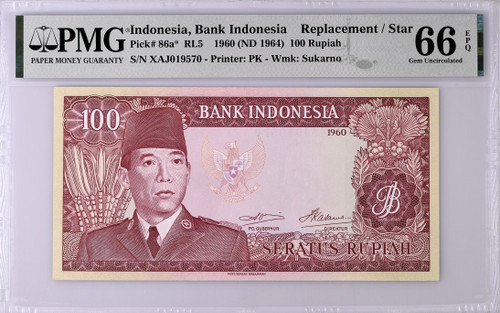1972 Nepal 1000 Rupees P-21 PMG 66 EPQ Pristine High-Grade Note
The 1972 Nepal 1000 Rupees banknote, cataloged as P-21 and graded PMG 66 EPQ (Exceptional Paper Quality), is an exceptional example of South Asian currency, capturing the rich cultural and historical essence of Nepal during the early 1970s. This banknote stands as a testament to Nepal's unique heritage and its journey through economic reforms and societal change.
Design and Features: This 1000 Rupees note features a vibrant and detailed portrayal of Nepal's diverse landscape and cultural symbols. The front of the note prominently displays the portrait of King Mahendra, under whose reign significant modernization initiatives were launched. The reverse side illustrates the serene and iconic scene of the Himalayas, a symbol of Nepal's natural beauty and a cornerstone of its identity. The note's color palette is rich and earthy, reflecting the natural colors prevalent in Nepalese art and scenery. The PMG 66 EPQ grade highlights the note's pristine condition, with sharp, crisp details and colors that have remained vibrant through the decades.
Historical Significance: Issued in 1972, this banknote is emblematic of Nepal's era of economic and social transformation under King Mahendra's rule. It represents a period marked by efforts to strengthen national identity and foster economic independence from foreign aid through the promotion of tourism and modernization of infrastructure, pivotal in Nepal's developmental narrative.
Collector's Value: With a PMG 66 EPQ grade, this banknote is highly sought after by collectors who value both its aesthetic beauty and historical importance. The superb preservation and the significant cultural imagery make it a cornerstone piece for collections focusing on Asian currencies or those commemorating significant monarchic periods in world history.
















